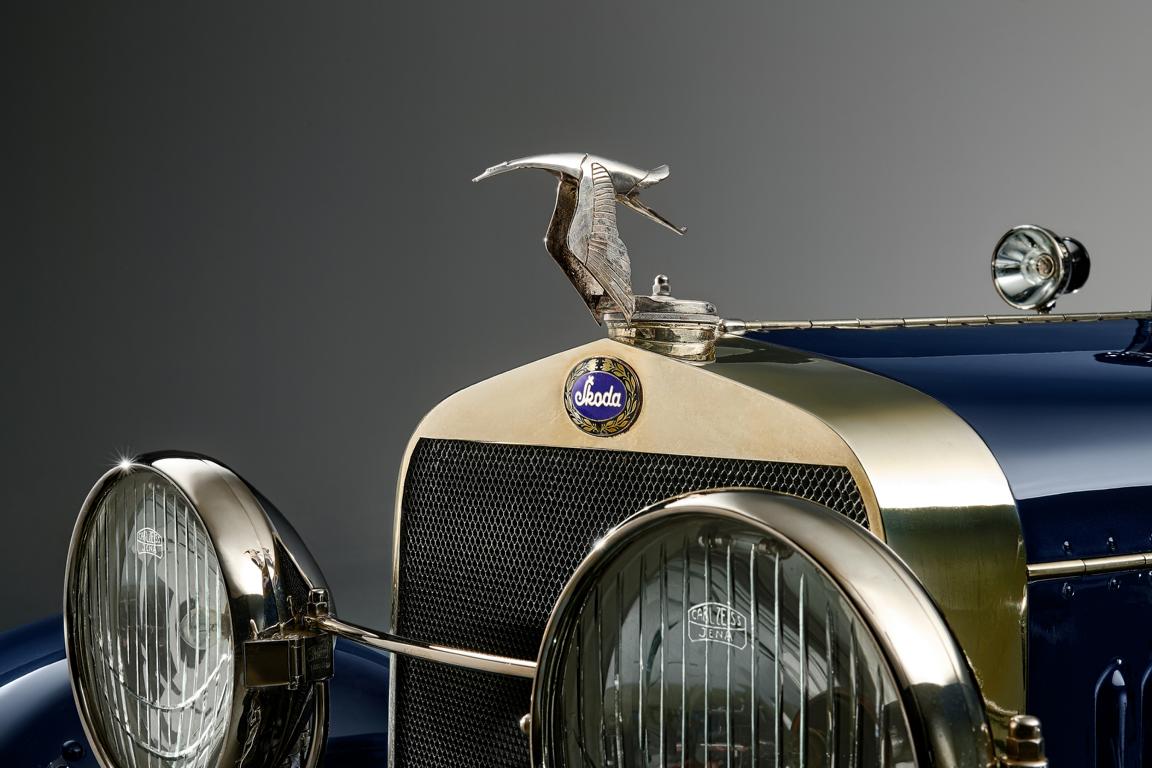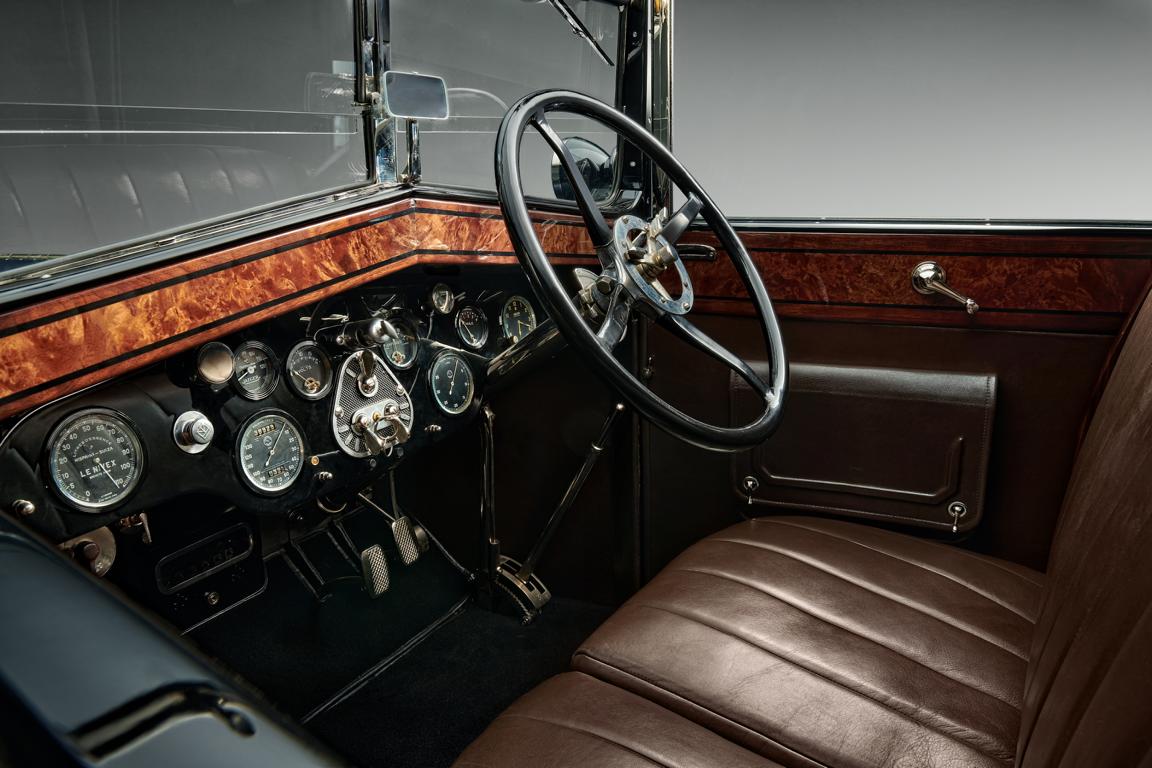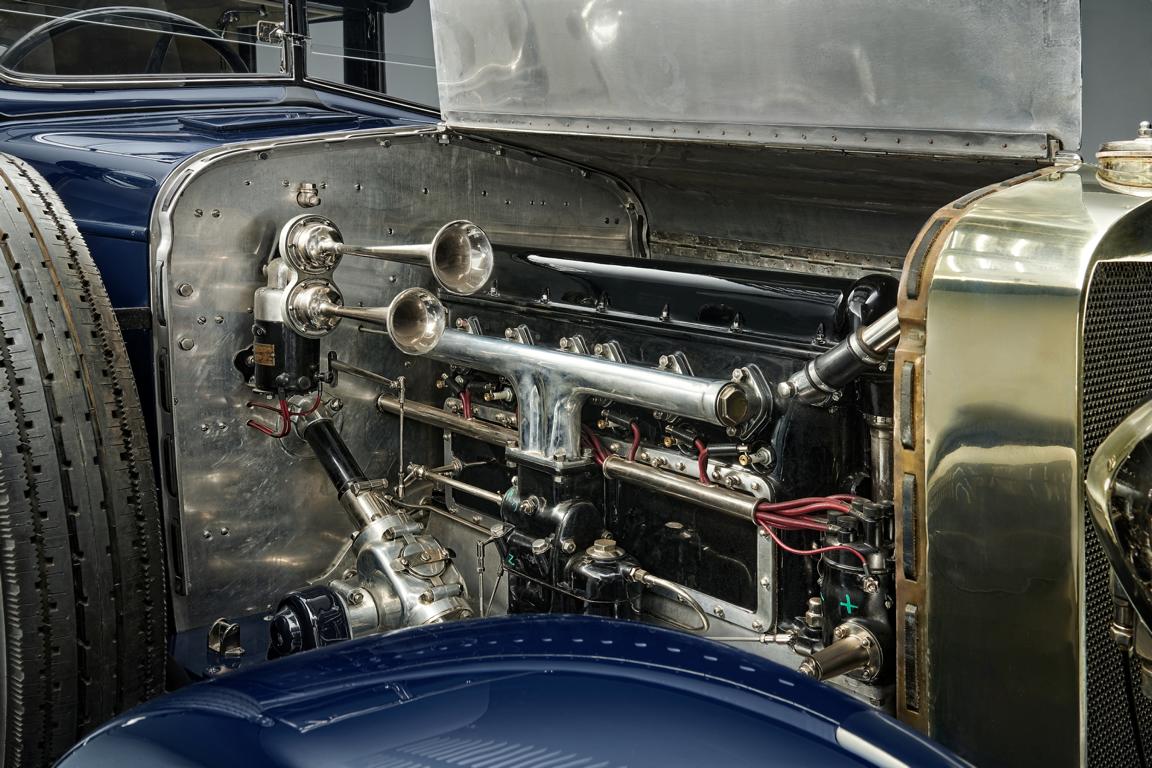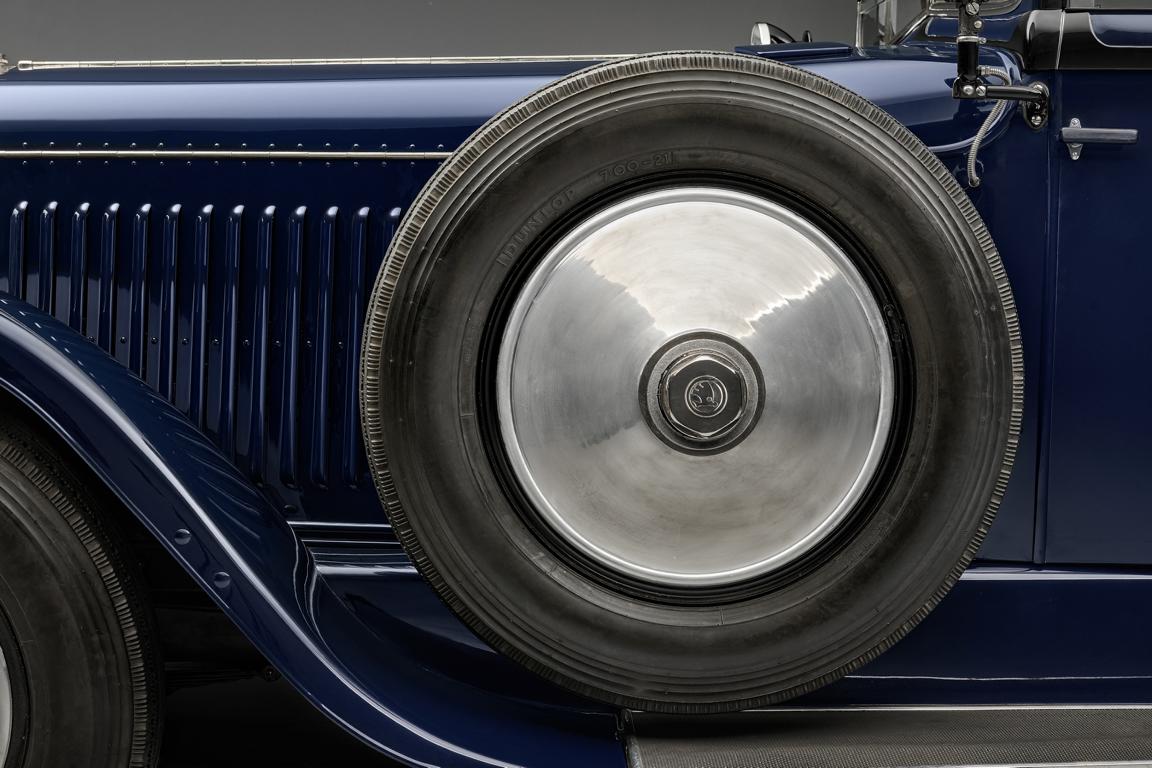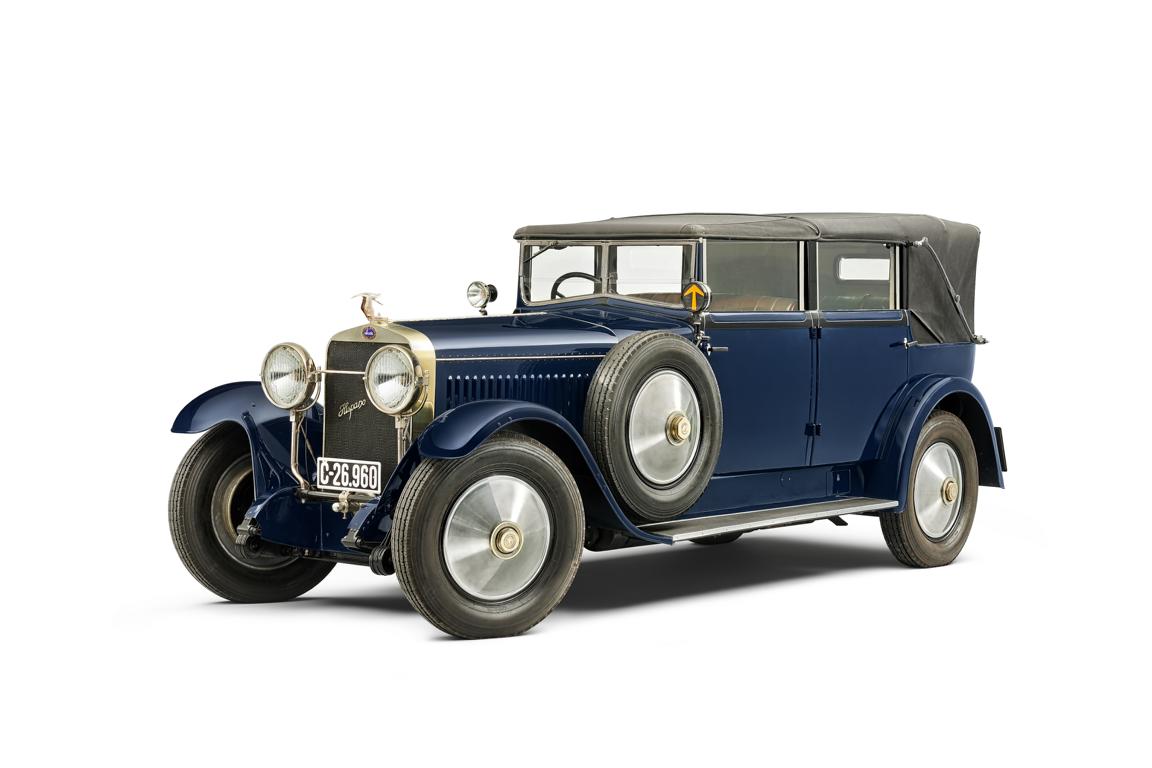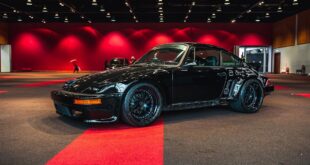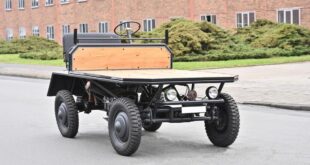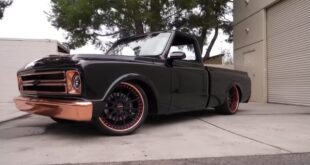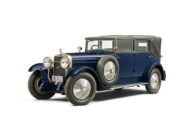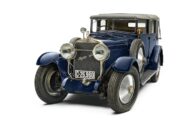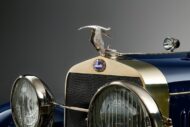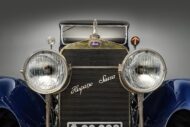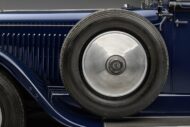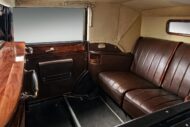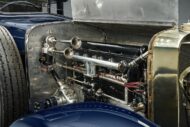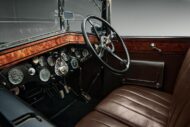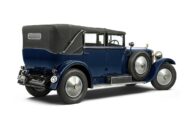The limited-edition Škoda Hispano-Suiza 25/100 hp was one of the most advanced automobiles of its time. Škoda's uncompromising quality standards in terms of craftsmanship and the materials used also made a significant contribution to the high prestige of the model manufactured under license. A 6,6 liter in-line six-cylinder petrol engine with 100 hp at 1.600 rpm accelerated the luxury vehicle, which weighed around two tons, to more than 120 km/h. A lavishly restored copy of one of the rare Škoda Hispano-Suiza is celebrating its trade fair debut at this year's Techno Classic, which opens its doors in Essen from April 12 to 16.
Škoda Hispano Suiza
- Built between 1926 and 1930, the Škoda Hispano-Suiza models were among the most advanced vehicles of their time
- Start of licensed production on November 10, 1924; Delivery of the first vehicle on May 10, 1926 to the first President of Czechoslovakia, TG Masaryk
- 'Rolling chassis' manufactured in Pilsen served as the basis for bodies individually tailored in Mladá Boleslav
- Škoda Museum recently presents fully restored Škoda Hispano-Suiza from 1928 at Techno Classica in Essen (April 12 to 16, 2023)
The Mladà Boleslav-based company had already established itself in the luxury automobile segment in 1907 with the Laurin & Klement FF powered by an in-line eight-cylinder. At the beginning of the 1920s, the L&K 450 drove ahead as the brand's flagship with a five-liter six-cylinder including a particularly quiet valve train. After a large fire on the factory premises had hit the company hard, in 1924 the idea of finding a strong cooperation partner matured. This role was taken over in 1925 by the Pilsen-based mechanical engineering and armaments group Škoda. From 1919 onwards, its local automobile division had mainly built special military vehicles, before license-manufactured commercial vehicles were added in 1924: petrol-electric trucks from Tilling-Stevens and Sentinel.
extremely stiff box frame and long wheelbase
As early as November 10, 1924, Karel Loevenstein, as Managing Director of Škoda Pilsen, decided to have the luxurious H6B from Hispano-Suiza produced under license. Škoda Pilsen had already built aircraft engines for this company. Incidentally, its name is explained by the fact that, in addition to locations in France, it was also represented in Spain (Hispano) and its chief designer came from Switzerland (Suiza). The Hispano-Suiza H6B was characterized by its extremely rigid box frame and long wheelbase of 3.690 millimeters.
The straight-six with an aluminum block and cast-iron cylinder liners featured an overhead camshaft (OHC). One particular detail indicates that the motto 'money doesn't matter' was apparently used in the construction of the luxury vehicle: the crankshaft, which has seven bearings and weighs 45 kilograms, was milled from a 350-kilo block of iron.
The smooth-running engine developed 100 hp at 1.600 rpm. Versions with higher compression for better fuel quality even reached 135 hp at 3.000 rpm. With an unladen weight of around two tons, five meters long and two meters high, the colossus accelerated to more than 120 km/h when required. The average consumption of 20 to 25 liters per 100 kilometers was reasonable for the time, the mechanical brakes worked reliably - also because a progressively working brake booster used the kinetic energy of the car. In September 1926, the management of Hispano-Suiza made an internal comparison between their vehicle and the license-built Škoda. Result: The Czech product proved to be the superior in many aspects, among other things because of its more precise shifting and steering.
a total of 100 vehicles produced
Because the Pilsen plant did not have a body shop, more than half of the 100 vehicles produced were completed at the production site in Mladá Boleslav. The remaining cars were finalized by independent body cutters such as Aeor, Brožík, JO Jech, Petera (predecessor of today's Škoda Auto location in Vrchlabí), Pokorný & Beiwl or Uhlík. In addition to exports to all of Europe, a third of the production went to Turkey and Argentina. The delivery certificate for the very first Škoda Hispano-Suiza is dated May 10, 1926 and belongs to a limousine that served the co-founder and first President of Czechoslovakia, Tomáš Garrigue Masaryk, for around ten years.
Only a handful of Škoda Hispano-Suizas have survived to this day. The example in the Škoda Museum is undoubtedly one of the most attractive. The chassis bears the serial number 469, the engine 1.181. The chassis left the factory in Pilsen on May 4, 1928. The well-known coachbuilder JO Jech, whose company was based on Karolína Světlá Street near the National Theater in Prague, handed over the finished car on September 22, 1928 to the up-and-coming Association of Czechoslovak sugar refineries.
Its president Robert Mandelík (1875 – 1946), industrialist, financier and mayor of Ratboř near Kolín, used the Škoda Hispanic-Suiza until the mid-1930s. As was customary at the time, the robust chassis with its powerful engine was then transformed into a fire truck. In this capacity, chassis number 469 served during the Second World War in a guard station in the municipality of Katowice, which belongs to the city of Strakonice.
extremely demanding restoration
A Slovak collector acquired the car in the 1970s. The next owner came from Prague and in 1995 started an extensive ten-year restoration. The famous artist Václav Zapadlík designed a design language in the style of JO Jech based on the original chassis and the original front body. As a result, the Škoda changed Hispanic-Suiza the owner twice before becoming part of the Škoda Museum collection in 2010.
In 2019, another restoration, this time extremely demanding, began there. After extensive study of archive material, the goal was to restore the car to its original delivery condition. As part of the work, the museum workshop specialists discovered and repaired, among other things, some major damage to the engine and other components and corrected various repairs that had been improperly carried out in the past. The enormous attention to detail is reflected not least in the flawless replicas of the original license plates with the identifier Č-26.960. The Škoda presents itself in its new perfect condition Hispanic-Suiza 25/100 PS to the public for the first time from April 12th to 16th, 2023 at the Techno Classica in Essen.
Of course, that wasn't the end of it. Our tuning magazine has tens of thousands of other tuning reports in stock. Do you want to see them all? Just click HERE and look around. Or are you especially interested in our Tuning classics category? Then the following excerpt is tuned Young and oldtimers definitely the right place to browse.
other related posts
|
Techno-Classica 2023: reconstructed 1946 original record car! |
|
 tuningblog.eu Your magazine about tuning the car
tuningblog.eu Your magazine about tuning the car


